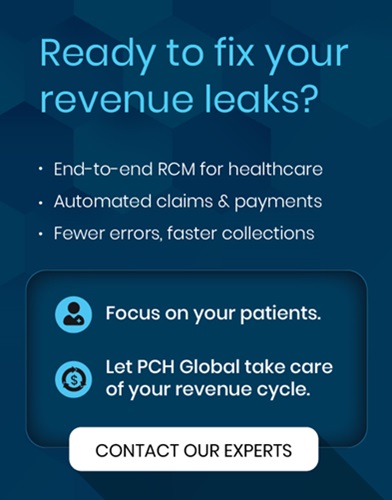
In the summer of 2025, Washington did something extraordinary. It passed the One Big Beautiful Bill, which is a law that promises to shake up healthcare for millions of Americans. Hailed by some as the most ambitious fix since Obamacare and criticized by others as a high-stakes gamble, this bill seeks to turn the page on some of our United States’ most persistent health challenges: rising costs, spotty coverage, and the stubborn divides between cities and rural communities.
What makes the One Big Beautiful Bill (OBBB) so transformative? Its aim is nothing less than expanding the promise of coverage and lowering the price tag for patients and the country as a whole. Let’s take a clear-eyed look at what’s inside the bill, where the optimism and the worry come from, and why this could be the moment American healthcare begins to rewrite its story.
One Big Beautiful Bill Healthcare Objective: Expanding Access and Coverage
Refocusing on Rural America, Finally
For years, rural America has sounded the alarm: hospitals closing, doctors leaving town, care getting harder to find, and payments from insurers and government programs falling short. The $50 billion pledge in the One Big Beautiful Bill Healthcare Coverage plan is a lifeline for millions in rural areas who’ve long felt left behind. With this funding, states can reinvent rural systems from the ground up. They can upgrade hospitals, buy telehealth tech, and invest in the next generation of doctors and nurses willing to serve in small towns and farming communities.
But what’s truly innovative is how the bill gives states a say. Instead of cookie-cutter solutions, each locality maps its own “transformation blueprint,” and gets rewarded when those plans lead to real improvements. These improvements could look like fewer preventable ER visits, healthier moms, and less burnout among front-line staff. This kind of flexibility and accountability has people cautiously hopeful.
Bringing Telehealth Into the Mainstream
Until recently, even something as obvious as seeing your doctor online could hit you in the wallet, especially if you had a high-deductible health plan. That changes now. By making telehealth pre-deductible, the bill lets millions access virtual care with little-to-no upfront cost. What seemed an emergency stop-gap during the pandemic is now promising better access for busy families, rural patients, and anyone who prefers convenience over the waiting room.
And that promise stretches further. Whether it’s a late-night call to address a child’s fever or a vital mental health check-in, for patients in remote corners or urban high-rises, telehealth is here to stay, on terms designed to actually serve patients.
New Space for Direct Primary Care
Healthcare, famously, is a tangle of networks, forms, and insurance rules. The OBBB takes a swing at that by clearing the way for direct primary care (DPC): practices where you pay a monthly fee to your doctor for the basics, skipping insurance for routine needs. Now, for the first time, you can use Health Savings Account (HSA) dollars for DPC, removing a pretty big financial obstacle for many who’d prefer simpler, more personal care.
This shift, seemingly small, is being quietly celebrated by working parents, gig workers, and rural residents who’ve struggled to even find a regular doctor, let alone one who takes their plan.
Modernizing What Employers Can Offer
Most Americans under 65 get their insurance at work, but employer plans have struggled to keep up with new ways of delivering care. OBBB opens the door wider, allowing for more diverse plan options, better price transparency, and ‘pre-deductible’ preventive and virtual services. For anyone who’s ever received a surprise bill or avoided care for fear of out-of-pocket costs, these safeguards can matter a lot, especially for the middle class, who often fall through the cracks.
One Big Beautiful Bill Healthcare Objective: Lowering Costs Where It Counts
Tuning Up ACA Subsidies (But With an Expiration Date)
During the pandemic, the federal government stepped in to boost health insurance subsidies, making ACA plans more affordable for millions. OBBB keeps those enhancements for now. Starting in 2027, those subsidies start to shrink, aiming to focus finite resources on those who need them most. For many, that means more manageable premiums in the next couple of years. But for those caught by the phase-out, especially middle-income families and pre-retirees in expensive states, steep sticker shock could return.
Small Boon for Seniors: Medicare Savings Tweaks
Not every fix is massive, but some are quietly meaningful. The bill nudges up the eligibility for low-income Medicare savings, simplifies enrollment, and chips away at bureaucracy for older adults. For seniors living on a meagre income, those changes could ease daily worries about affording medicines or accessing needed care.
Capping Drug Prices
Nothing in health care sparks outrage like sky-high drug costs. The OBBB aims to cap what patients pay out-of-pocket for insulin and a shortlist of other essential drugs.
What does it do? It brings some much-needed predictability for millions with chronic illnesses. Is it enough? Critics note the caps are narrowly targeted. Advocates counter that it’s a crucial first step.
One Big Beautiful Bill Healthcare Objective: Empowering States to Experiment
Block Grants: Turning States Into Health Policy Labs
What works in Vermont might not work in Alabama. Recognizing this, the bill puts real money through block grants behind state pilot projects targeting big issues like health equity, better payments for value, and new roles for community health workers.
But here’s the twist: states have to prove results, using real data on outcomes and savings. If a program stalls, they lose the money, and another state takes the lead. This carrots-and-sticks approach is designed to break the cycle of bureaucratic waste and endless pilot projects that fade from memory.
Is this the future of health reform? Only if states rise to the challenge and if federal watchdogs hold everyone’s feet to the fire.
Strengthening and Modernizing Medicaid
States are now expected to tighten up Medicaid oversight, conducting more frequent eligibility checks, rooting out duplicate or improper enrollments, and modernizing their data systems for better transparency. At the same time, they have greater authority to tailor Medicaid’s home and community-based services, and to design programs that reflect the needs of local populations, like expanding in-home care or adjusting how cost-sharing works. But all this freedom comes with firm expectations for results and accountability; states must meet federal cost and quality benchmarks, or risk losing support. In this way, the bill tries to strike a balance: giving states room to innovate, while ensuring taxpayer dollars are spent wisely and vulnerable patients aren’t left behind.
One Big Beautiful Bill Healthcare Objective: Tools for Planning and Predictability
Health Savings Account Overhaul
HSAs are now about to get bigger and a lot more useful. The OBBB doubles the annual contribution limits and lets Americans tap those savings for everything from gym memberships (with a doctor’s note) to home care, therapy, and DPC memberships.
Still, equity concerns remain: those with higher incomes are best positioned to save aggressively. But for millions, the expanded HSA could mean the difference between struggling to pay for an MRI and having a cushion for life’s medical curveballs.
Transparency tools for patients
The OBBB also mandates better access to cost and quality information for patients. This requires insurers and providers to offer user-friendly digital tools showing expected costs for procedures. They would also have to offer typical out-of-pocket expenses and quality ratings for facilities and clinicians. This helps Americans shop smarter, avoid unexpected bills, and make informed choices about where and how to get care.
Cuts, Compromises, and the Tough Math of Healthcare Spending
All this new spending means something will have to go. To pay for rural hospital bailouts, new telehealth options, and pilot programs, the bill enacts steeper cuts to Medicaid and dials back ACA insurance subsidies over time. What does that look like in the real world? Millions, perhaps over 11 million, according to budget estimates, could lose government-backed coverage by 2034 as work requirements tighten and program rules change.
That move, meant to stamp out fraud and redirect help to the “truly needy,” has critics ringing alarm bells, especially in urban hubs and high-poverty states where the social safety net is already stretched thin.
Who Wins and Who Loses?
The story of the OBBB is a story of trade-offs. Rural and remote patients, telehealth users, and those able to use expanded HSAs could gain big. Urban working-poor populations, younger adults hopping between jobs, and those in states slow to innovate are most at risk of falling into a new coverage abyss.
The justice or injustice of these shifts will become clear only as new data rolls in, but one thing’s certain: no reform this large comes without winners and losers.
For ordinary Americans, OBBB’s true meaning will unfold in the fine print of next year’s insurance statements, the speed of a specialist telehealth referral, or the price sticker at the pharmacy counter.
Looking Forward: How to Make the Promise Real
So what does success look like for the OBBB? Here’s a roadmap for the future of the bill:
- Monitor, adjust, and don’t be dogmatic. Generous ACA subsidies remain essential for millions. Congress must be willing to revisit subsidy formulas as real-world effects become clear post-2027.
- Grade state pilots honestly. If a program proves it works, which is it saves money, improves care, then they should scale it up fast. If not, cut losses quickly and transparently.
- Bolster the safety net. As the Medicaid landscape gets tougher, support for community clinics, mental health services, and rural providers will be essential.
- Arm the public with information. Americans must know their options as changes hit, whether that’s new eligibility rules, prescription copays, or state-based innovations.
- Keep the conversation going. Health reform is never “one and done.” Ongoing feedback from patients, providers, employers, and states will be vital to fine-tune the big changes.
Conclusion: A Bold, Unfinished Experiment in American Health
The One Big Beautiful Bill is, at its core, both daring and imperfect. It is a mix of new spending and old-fashioned cuts, technological optimism and fiscal skepticism.
For the optimistic, it’s a moment when the U.S. finally recognizes the needs of rural America, embraces digital medicine, and insists on proof from innovating states.
For the cautious, it’s a reminder that every move to save federal dollars has direct human consequences, sometimes falling hardest on those least prepared to absorb them.
Will the One Big Beautiful Bill Healthcare Coverage plan deliver on its lofty goals? Only time, robust oversight, and, above all, the lived experiences of millions of Americans will tell. But one thing is certain: after decades of gridlock and incrementalism, the nation has chosen a new path, one that will define American healthcare for years to come.
